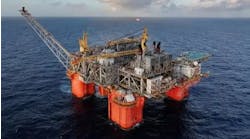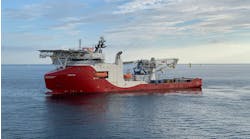Victor Schmidt
Exploration Editor
Offshore
Geologists have found surface analogs in Chile and western Ireland for significant geologic structures. Geologists from Stanford University located a sand injection deposit in Chile as an analog for North Sea seismic features and geologists from the University of Texas found western Ireland sediments similar to those in Gulf of Mexico mini-basins. The authors explained the features in papers presented at the American Association of Petroleum Geologists convention in Calgary, Canada.
One of the guiding principles of geology is the maxim, the present is the key to the past. In practice, processes that have operated in the past continue to form geologic structures today. By locating surface outcrops and examining the structures they hold, geologists can understand older buried features in the search for new oil and gas resources.
Over the last year, North Sea geologists have come to understand that inverted conical structures in seismic data are sand injection features formed from over pressured sands. The structures serve as vertical pathways for hydrocarbon-bearing fluids and can also be productive reservoirs.
Stephen M. Hubbard of Stanford University presented a paper on a sand intrusion in the Cretaceous Cerro Toro formation in Chile. The feature is 67 m wide by 100 m long and was deposited in the Magallanes foredeep. He suggested that the remobilization of the coarse-grained material was related to gas charging of the sediments coupled with overpressure. The inverted, conical shape of the outcrop is similar to features seen in Paleogene structures in the North Sea.
David Pyles from the University of Texas described an outcrop of Carboniferous Ross sandstone in western Ireland. The structure shows features common to GoM mini-basins:
* A stable depositional center
* Increased depositional area as the basin filled
* Increased sediment supply during deposition
* Updip paleocurrent correlation to an unconformity.
The deposit has four distinct facies that changed through the basin's depositional history. Statistical facies analysis leads to greater understanding of the depositional history and can help build models for evaluation of similar features in the northern GoM, according to the author.
6/22/05


